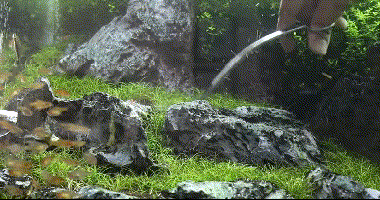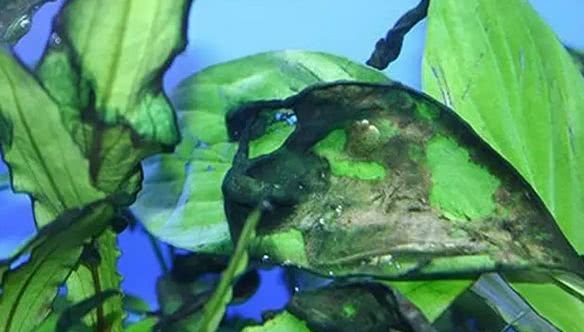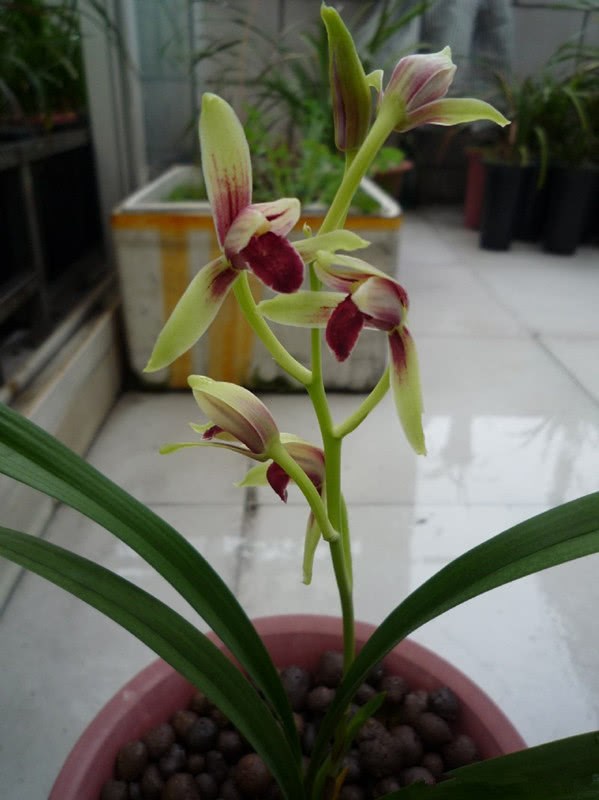Matters needing attention in pruning aquatic plants

1. When trimming, it is best to turn off the foreground grass such as cow hair, mini short, dwarf pearl, and its own density is lower than that of water. During pruning, there will be a lot of debris floating on the water surface. These debris are likely to enter the filter bucket from the floats and toothed combs of the oil remover, resulting in excessive accumulation of debris in the filter bucket and even infarction.
Even if there is no immediate infarction, too much detritus of aquatic plants in the dark and lightless filter bucket will also pollute the water quality, resulting in adverse effects such as the decrease of the flow rate of the filter bucket and the obvious drop of the filtration effect. Therefore, before pruning, it is best to temporarily close the deoiling film device, usually only need to lower the central screw.
2. Pruning should not cut off too many aquatic plants at one time.
For the area of pruning, it is recommended that the novice should only trim 1/3 of the total area at a time, and the plants to be pruned will grow new buds and then trim another 2/3 area in turn. This will keep the whole tank in a very stable state and prevent the outbreak of an outbreak due to the loss of too much water plants and algae and the loss of competitors. And if it is trimmed in three times, the labor intensity of each time will not be too great.
It can be pruned according to the order of left, middle and right, or it can be pruned first, then the middle grass, and finally the foreground grass, which has the least impact on the appreciation of the water grass tank. (if there are a large number of tall and luxuriant middle back grass in the tank, it is not recommended to prune the foreground grass first, because it will block the light.) compared to experienced fish friends who can trim all the aquatic plants twice, the master-level contestants can trim all the aquatic plants at once.
3. The pruning action should be gentle, not rough, except for a few species, all of them are very fragile. Any excessive distortion or extrusion may cause irreversible damage to the stems and leaves of aquatic plants. An important reason for part of the black stem of the palace grass is that the stem of the water plant has been bent by external forces (hands, water, fish, etc.) to an angle that may lead to local fracture, and the water plant itself has a certain ability to repair. Usually, a large number of air roots will grow out of one or more stem nodes above the crease, while the crease is likely to blacken first and then rot, and finally break off.
A detail that is often overlooked is that after the stem grass is cut off, if the upper half of the need for replanting is taken out of the water, it is likely to twist the aquatic plants to a large angle, instead of planting them directly in the water.
4. Filtering should not be turned off when pruning.
There are different opinions on this issue, and some people advocate turning off the filtration when pruning. Their reason is that they are afraid that the strong current will blow the water plant debris all over the tank, which is difficult to clear, and the other is that it is necessary to change the water after pruning. It's okay to mix up the water now. However, from the point of view of maintaining the biology in the cylinder, turning off the filtration during pruning will have an adverse effect on the biology.
After the current is embellished, first, it will form a brief hypoxia of organisms in the water, and second, if the stirred toxic and harmful substances in the bottom bed can not only be filtered and sucked away immediately, it will not only muddy water, but also cause serious harm to creatures such as shrimp snails. This is why the snail often dies after a big pruning. In contrast, fish are much more resistant, but fragile fish such as black-line flying foxes and elves should also be on the lookout for floating heads to be fished out or given oxygen by air pumps.
5. the supply of carbon dioxide should be increased after pruning.
Carbon dioxide is the material foundation of the photosynthesis of aquatic plants, and it also plays a role in maintaining aquatic plants under strong light. After pruning, on the one hand, the lighting of aquatic plants is suddenly improved (the lamps and lanterns have not changed, but the occlusion is reduced, which is equivalent to improving the lighting intensity), on the other hand, the carbohydrates needed to repair wounds are also in short supply.
If there is a lack of carbon dioxide supply at this time, aquatic plants may be burned by strong light, and they may also be infected with bacteria to form a large area of decay because the wound has not healed for a long time, so after heavy pruning, we must not begrudge that little carbon dioxide. I'd rather waste some than give less.
6. The amount of liquid fertilizer should be reduced temporarily after pruning.
As more wounds are formed after cutting off the stems and leaves of aquatic plants, these wounds will not only lose precious carbon dioxide and nutrients, but also be infected with bacteria or viruses, resulting in plant disease and even death. At this time, the plant will put all its energy on repairing the wound, and the plant is basically in a state of discontinued growth at this stage. After injury, the metabolism of the plant slows down obviously, and it takes a period of repair to restore the growth rate, so the demand for fertilizer of aquatic plants will be reduced.
And after pruning, the absolute number of aquatic plants has also decreased a lot, if still according to the original fertilization dose, it is likely to form fertilizer can not be used up, accumulate down and cause algae outbursts. Therefore, after pruning, it is best to adjust the liquid fertilizer to a smaller dose, so that it can be halved. After the aquatic plants grow new buds, there are no strings of tiny bubbles in the cross section, which means that the wound of the plant has been repaired, and then the amount of liquid fertilizer can be gradually increased.
7. it is not suitable to clean and filter on the day of pruning.
When pruning aquatic plants, it is inevitable to move the bed to the end (often seen in pulling grass, recommending, changing scenery, etc.), even if it does not make the tank dusty, it may make the water muddy. At this time, in addition to changing water, some people also want to clean the filter bucket by the way, but sometimes it is not necessarily a good thing to be too diligent. Fish and shrimp die after cleaning the filter bucket.
This is due to the release of a large number of toxic substances such as nitrite and ammonia after stirring the bottom bed, which are normally disposed of by nitrifying bacteria into relatively harmless nitrate and ammonium, but assuming that the filter bucket is cleaned at the same time, the result of the loss of a large number of nitrifying bacteria is that all toxic substances cannot be disposed of effectively, and the remaining parts will have a fatal effect on organisms. Therefore, the correct operation is to wait for a day or two, and then clean the filter bucket, and then use the original tank water as far as possible when washing, and do not have to wash too cleanly. If there is a pre-filter bucket, it is simple to change all the pre-filter materials.
8. it's best to change a lot of water on the day of pruning.
Changing water is the best way to remove toxic and harmful substances from the water, and the effect is immediate. After pruning, it is best to stop a big change of water, whether or not you can move the bed to the end, to prevent the outbreak of algae or the sudden death of fish and shrimp. However, when injecting water into the grass jar, be careful not to let the water hit the bed directly, otherwise it is not only easy to destroy the original landscape, but also form the bottom bed toxic substances (such as hydrogen sulfide, etc.) are released into the water in large quantities. Poison shrimp snails or compare vulnerable fish (such as elves, black line flying foxes, etc.).
As for how much water to change, it depends on the quality of the local tap water. if the quality is good, you can change it more, even 1/2 to 2/3 at a time. If the water quality is poor (tap water has a high hardness or PH value) and needs to be mixed with pure water or using a Ro machine to make water, it is recommended to change only 1/3 or 1/4 at a time.
There are surprises here.
- Prev

Brown algae, silk algae, green spot algae, black hair algae, staghorn algae, blue algae... all go away
Cyanobacteria are green, black and brown in color. They cover the surface of the bottom sand like nasal discharge. They have a foul smell and often appear on the contact surface between the bottom sand and the tank wall. Cause: water hardness is too high, bottom sand over...
- Next

This orchid has won a gold award in horticulture. It blossoms diligently, fragrant and beautiful. It is worth having.
Guide green potted plants is a necessary embellishment of home life, raising some flowers and plants at home, many benefits, not only can beautify the room, but also happy mood. Huasheng potted Diary No. 1212 takes you to know a kind of orchid that is worth having. ...
Related
- Wuhan Hospital Iron Tree Blooming Result Was Instantly Frightened by the Gardener Master
- Which variety of camellia is the most fragrant and best? Which one do you like best?
- What is the small blue coat, the breeding methods and matters needing attention of the succulent plant
- Dormancy time and maintenance management of succulent plants during dormancy
- Minas succulent how to raise, Minas succulent plant pictures
- What are the varieties of winter succulent plants
- How to raise succulent plants in twelve rolls? let's take a look at some experience of breeding twelve rolls.
- Attention should be paid to water control for succulent plants during dormant period (winter and summer)
- Watering experience of twelve rolls of succulent plants
- Techniques for fertilizing succulent plants. An article will let you know how to fertilize succulent plants.

